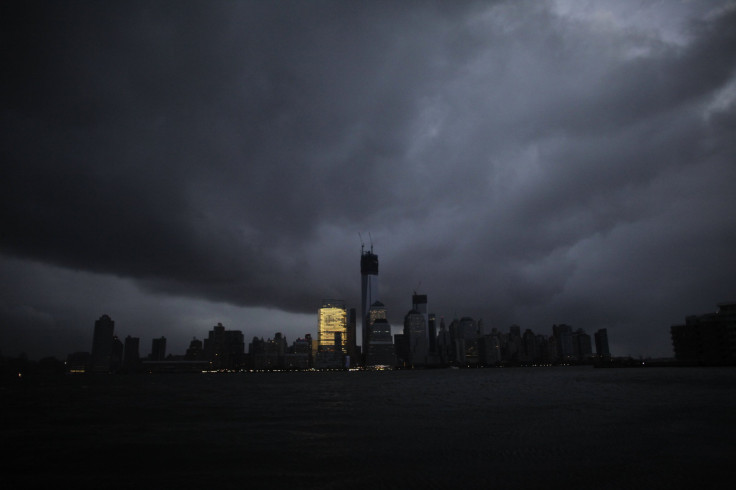SolarCity Corp Unveils Microgrid Service To Help Keep Lights On During Natural Disasters

SolarCity Corp., the rooftop solar company chaired by Elon Musk, is launching a “microgrid” service to help people keep the lights on during grid blackouts and natural disasters. The California solar firm says it will now sell small-scale generators and power management software along with its standard solar panels in the U.S. and internationally.
“SolarCity’s microgrid service ensures that any community anywhere in the world vulnerable to power outages and high energy costs -- including remote or island communities, hospitals and military bases -- can have dependable, clean power when the grid is down,” the company said in a Monday press release.
SolarCity is one of a handful of firms that’s leading the boom in U.S. rooftop solar projects. Nearly 200,000 homes and businesses put panels on their roofs or properties in 2014, bringing the total count to more than 600,000 nationwide, according to the Solar Energy Industries Association and GTM Research.
SolarCity offers financing and leasing plans that enable homeowners to install panels without paying tens of thousands of dollars up front, which they’d have to do if they bought the system outright.
The company says it will offer similar financing options and payment programs for its GridLogic service. The microgrids will draw energy from solar panels and store the power in batteries made by Tesla Motors Inc., the luxury electric car company run by Musk. Software-based monitoring and control systems will help to manage power flows between the panels and batteries, as well as manage the connection with the utility grid.
While owners can use the systems for daily energy use, SolarCity says the main idea behind GridLogic is to provide backup service during hurricanes, tornadoes and other weather events.
"There has been a dramatic increase in severe weather events the last few years -- climate-related, almost certainly -- and it’s led to more grid outages," SolarCity spokesman Jonathan Bass told the newspaper San Jose Mercury News. He pointed to 2012’s Hurricane Sandy, which knocked out power for more than 8.5 million people across 21 states. In parts of New York and New Jersey, some communities went weeks without light and heat.
SolarCity cited a 2014 World Meteorological Organization report that said in the first decade of this century, nearly 3,500 floods, storms, droughts and heat waves clobbered the planet -- nearly five times as many disasters as the nearly 750 catastrophes reported in the 1970s. The scientists said man-made climate change is increasing the risk of weather-related disasters.
In the wake of Sandy, many states are investing heavily in backup power systems. New York launched a $40 million initiative to help communities study the feasibility of local microgrids. New Jersey put $200 million in its Energy Resilience bank to support distributed energy projects at critical facilities. On the opposite coast, in California, the state is offering $26.5 million in grants for microgrid projects that use renewable energy supplies like solar, Greentech Media noted.
Over the next three years, U.S. microgrid capacity is expected to jump 75 percent, from about 1,050 megawatts to nearly 1,850 megawatts. The total value of microgrids could reach $3 billion by 2018, according to Boston-based GTM Research.
Bass said SolarCity’s GridLogic venture will be more affordable and streamlined than existing microgrid services. “The approach to micogrids to date has largely been either piecing something together from some small equipment vendors, or you go at the high end, to a GM or Siemens and pay upward of $10 million for a massive solution that may not be, from a budget standpoint, realistic, especially for a rainy-day solution,” he told the San Jose newspaper.
GridLogic will mark the first major international effort for SolarCity, which offers solar services in 16 U.S. states. The company is also busy building one of the world’s largest solar manufacturing facilities on U.S. turf, with a 1,000-megawatt factory near Buffalo, New York, in the works.
© Copyright IBTimes 2025. All rights reserved.





















